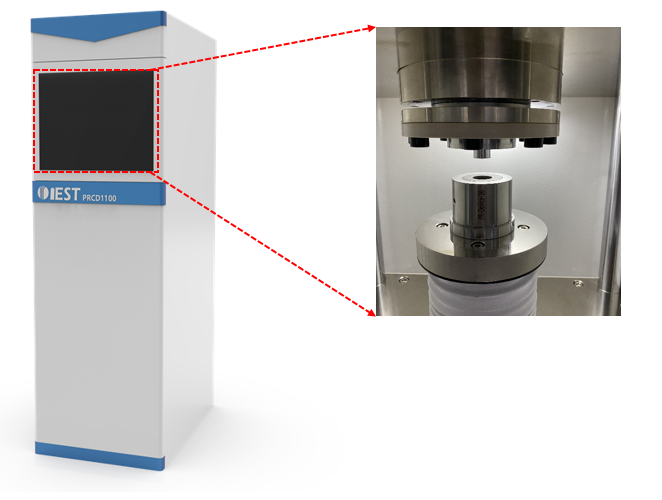Differences in Powder Conductivity and Compaction Density in Pressurized and Unloading Modes
Measurement methods of compaction density and resistivity of lithium electric materials, detailed test methods are described in national standard GB/T 24533-2019《 Lithium-ion Battery Graphite Negative Materials and Carbon Composite Lithium Iron Phosphate Positive Materials for GBT 30835-2014 《 Li-ion Battery.In the compaction density test of graphite materials, the powder thickness with the cursor caliper to calculate the compaction density, which is a measure of pressure discharge.
The powder will have a certain degree of thickness rebound after pressure discharge, and the compaction density will change, so we should pay attention to what state value when comparing the compaction density of different materials.Two test methods are specified for measuring the conductivity of lithium iron phosphate materials: electrochemical impedance spectrum and four-probe method, The electrochemical impedance spectrum test is the impedance of the pressure sheet removed after pressure, The conductivity is then calculated by measuring the thickness of the removed pressure sheet, This is a method to measure the conductivity after pressure discharge, When the four-probe method measures the conductivity by applying a certain pressure on the powder for a period of time, After the resistance is stabilized, Read out the resistance value and calculate the conductivity, This is a pressurized method to test the conductivity, The conductivity at this time will be affected by the pressure thickness and pressure pressure, Therefore, the same test parameters must be used when comparing the material conductivity.
This paper tests the compaction density and conductivity of graphite and L FP materials, and analyzes the differences between the two test methods.
 |  |
Figure 1.National standards for graphite class and lithium iron phosphate materials
1.Powder Compaction Density & Conductivity Test
1.1 Test Equipment: Test the compaction density and conductivity of graphite and lithium iron phosphate powder for compression and unloading using PRCD1100 (IEST-lithium iron phosphate technology), as shown in Figure 2.
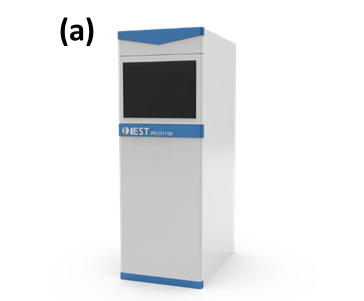
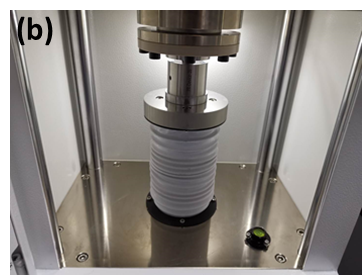

Figure 2. (a) Appearance diagram of PRCD1100; (b) Structure diagram of PRCD1100
1.2 Test Parameters: Four probe test principle, apply pressure range 10-200MPa, pressure interval 10MPa, 10s, discharge to 3MPa, 10s.
1.3 Sampling Quality: Graphite / LFP powder 1.0000±0.0010g.
1.4 Test Results: As shown in FIG. 3, the LFP powder fluctuates during pressure and unloading with the powder compaction density and the conductivity curve, varying about 3% near 200MPa and about 3% while the conductivity changes about 30%.
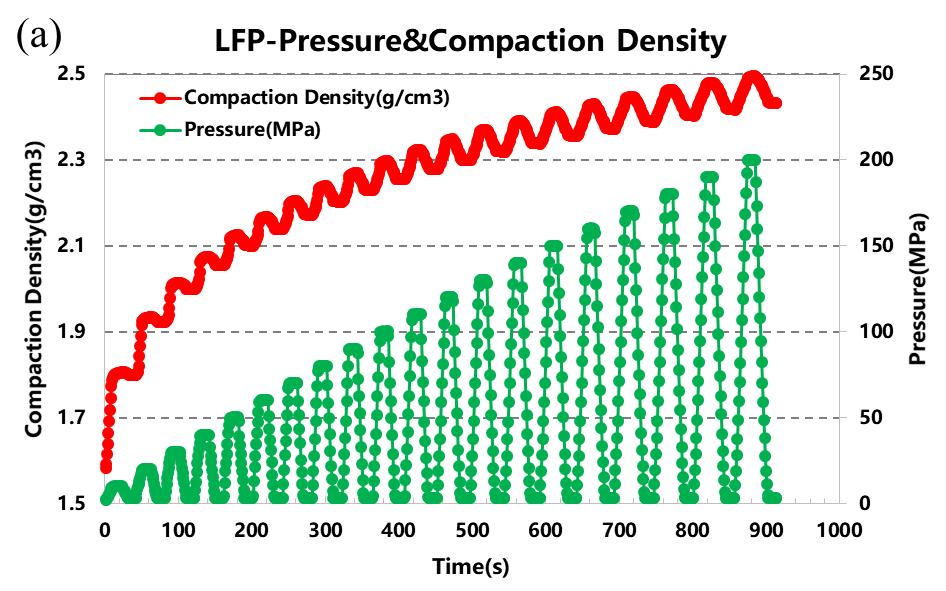 |  |
 |  |
Figure 3.LFP Compaction density and conductivity variation curves of powder compression and unloading
As shown in Figure 4, the graphite powder is pressurized and discharged with the powder compaction density and conductivity curve, near 200MPa, while the conductivity changes by about 80%.
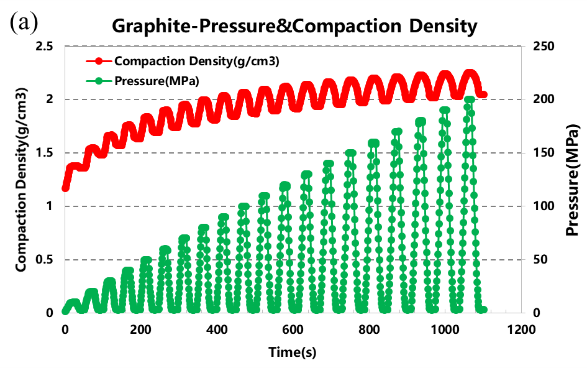 |  |
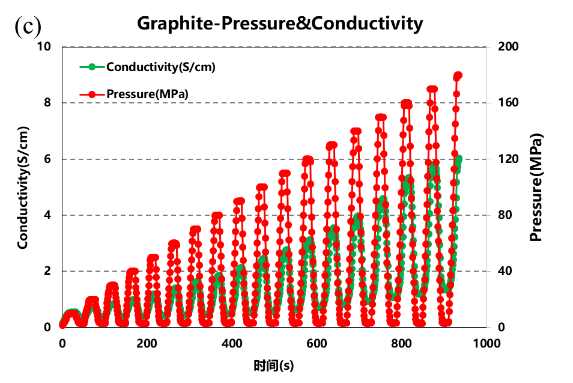 | 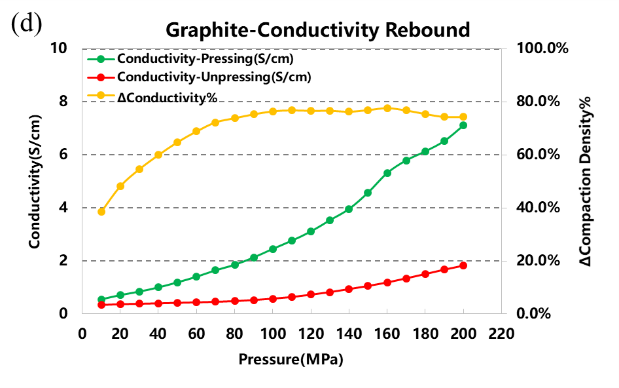 |
Figure 4. Compaction density and conductivity change curves of graphite powder compression and unloading
2. Summary
When testing the compaction density and conductivity of lithium powder, attention must be paid to the impact of test conditions on the results, and pressure and pressure discharge will greatly affect the test results. When the pressure pressure is approaching 200MPa, the compaction density between pressure and discharge changes about 3%, about 30%, while for graphite materials, the compaction density changes about 10% and about 80%.
3. Ref
1.GBT 30835-2014 《 Carbon Composite Lithium Iron Phosphate Positive Pole Material for Lithium-Ion Battery.
2.GB/T 24533-2019《 Lithium-Ion Battery Graphite Negative Pole Material".
IEST Related Test Equipment Recommended
PRCD Series Powder Compaction Densities & Resistance Tester (IEST): Compaction density and resistance synchronous tests for all lithium powder pressure / discharge state, supporting two probe and four probe test methods, mainly with the following three test modes.
a.Single-point pressure synchronization test.
b .Multi-point pressure synchronization test.
c .Backash test of pressure and discharge state.
